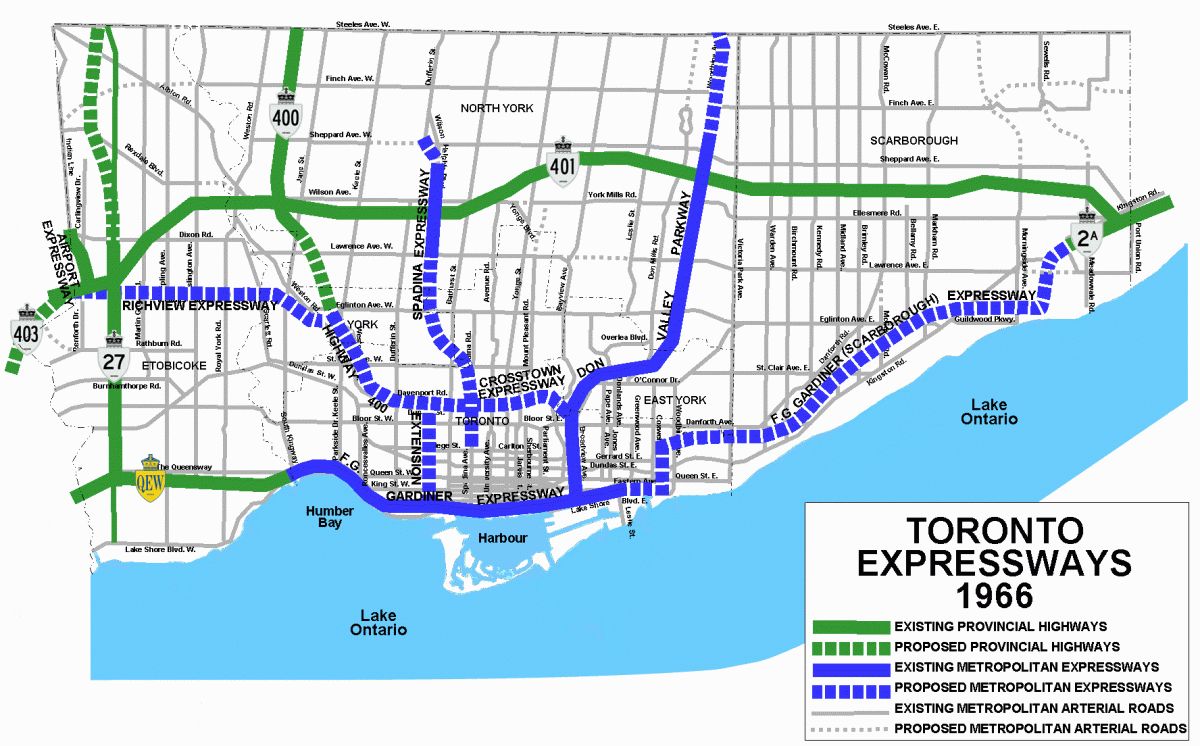TORONTO – Traffic congestion wasn’t an issue when the Don Valley Parkway opened in the 1960’s – but there was supposed to be more highways and less cars.

The original plan called for the DVP to be one of several expressways running in and out of the downtown core. None of the others was ever built.
But density increased in Toronto and the surrounding suburbs sprawled from Clarington to Burlington in the ensuing years – increasing traffic pressures on Toronto’s meandering parkway
Dr. Raktim Mitra is a professor of Urban Planning at Ryerson University in Toronto.

Get daily National news
“[The DVP was] originally designed as a parkway but now there’s so much traffic that is feeding onto it I don’t think that this density north of the city was intended or thought of when the DVP was first designed,” he said.
The DVP is built to handle about 60,000 vehicles a day. Estimates suggest that number is about 60 per cent higher – closer to 100,000
Ari Rabinovitch flies over the city every day keeping an eye on traffic. The hot spots are chronic problems that actually start on the 404 at Finch.
“There’s an area just south of Finch where we have an option to veer off into collectors. And what that will do divert traffic that is headed toward the 401 ramps. And then there’s the express option for people continuing onto the Don Valley Parkway”
READ MORE: Should Toronto embrace ramp metering on the Don Valley Parkway?
So what’s the problem?
There are six lanes of traffic, including the HOV lane, south of Finch Avenue but they all squeeze down into 3 lanes when approaching Highway 401.
The slowdown is amplified because traffic from the eastbound and westbound Highway 401 ramps enter onto the DVP.
From there are six more entry points onto the southbound DVP from major routes within less than 4 kilometers.
It typically creates a rush hour slowdown that stretches about 14 kilometers from Finch Avenue all the way down to the Bayview/Bloor exit.
Mitra’s states the obvious: the DVP just can’t handle the number of cars.
“The capacity of the original design is just not, in my personal opinion, is not suited for this much traffic. I don’t think it was built for this purpose.”








Comments